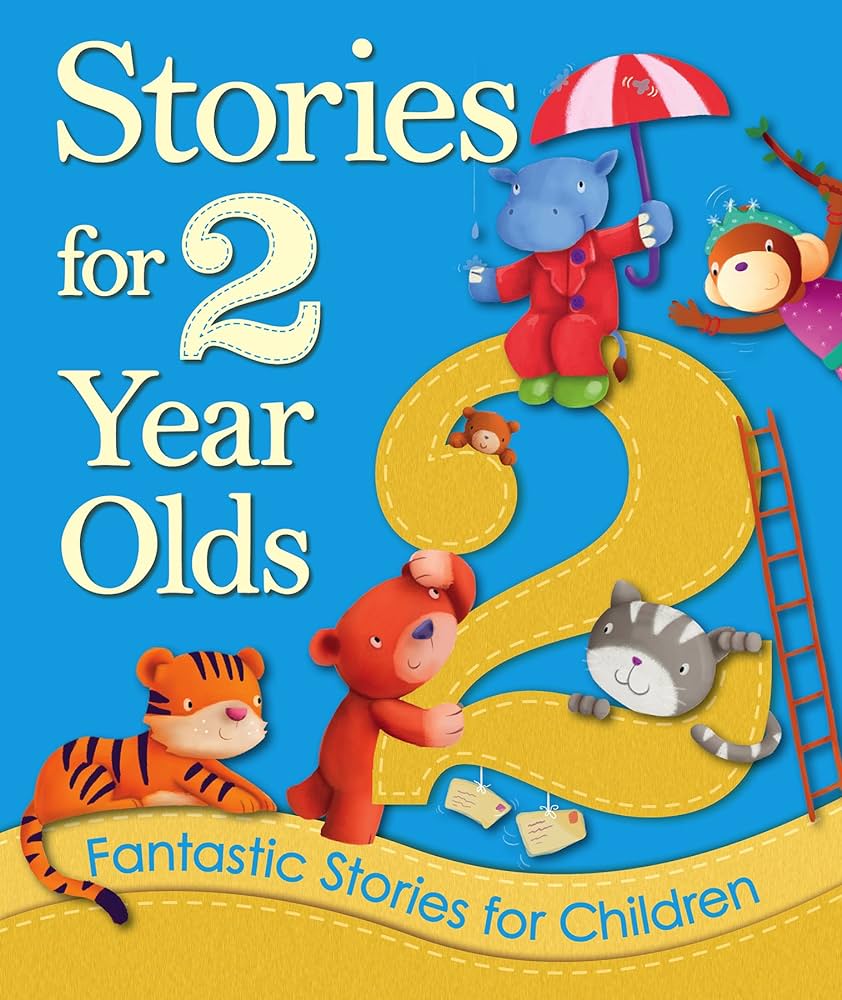9 Best Books for 2 Year Olds: Top Picks for Interactive and Educational Fun
Choosing the right books for your 2-year-old can be a game-changer in their early development. At this age, children are curious, eager to learn, and rapidly expanding their vocabulary. The best books captivate their imagination and introduce them to new concepts in a fun and engaging way.
1. Interactive Learning: “Pat the Bunny” by Dorothy Kunhardt
“Pat the Bunny” by Dorothy Kunhardt is a classic choice for your 2-year-old. This timeless book offers more than just a story.
Engaging Touch-and-Feel Elements
Experience various textures which bring the story to life. The soft fur, bumpy surfaces, and peekaboo flaps keep your child engaged and curious. Touching these different elements also makes reading interactive and fun.
Stimulating Early Sensory Skills
Encourage your child’s sensory development through open-ended play. Handling these textures promotes tactile learning, making them more aware of their sense of touch. Additionally, these stimuli help build connections between sensory experiences and language development.
2. Rhyme and Rhythm: “Brown Bear, Brown Bear, What Do You See?” by Bill Martin Jr. and Eric Carle
This classic book offers more than just a delightful reading experience. It features whimsical illustrations and engaging text that captivate young readers.
Reinforcing Language Skills through Repetition
Repetition in the text solidifies language skills. Hearing phrases like “Brown Bear, Brown Bear, what do you see?” repeatedly helps children familiarize themselves with sentence structure and vocabulary. Kids often begin to anticipate the text, boosting their memory and language acquisition skills with each read-through.
Introduction to Animals and Colors
The playful narrative introduces children to different animals and colors. Each page displays a new animal and its distinct color, like a purple cat or a blue horse. This combination of visual and verbal elements enhances recognition skills, making learning both fun and effective.
3. Classic Tales: “The Very Hungry Caterpillar” by Eric Carle
“The Very Hungry Caterpillar” is a timeless classic that captivates 2-year-olds with its vibrant illustrations and simple yet engaging story.
Learning Days of the Week and Counting
Introduce basic concepts with ease. The narrative follows the caterpillar as it eats through various foods each day of the week. This repetition helps your child become familiar with the days of the week while also practicing counting. For example, your child will enjoy counting the strawberries, oranges, and plums the caterpillar eats.
Exploring the Life Cycle of a Butterfly
Discover nature’s wonders. The book seamlessly illustrates the life cycle of a butterfly, starting from an egg and progressing to a magnificent butterfly. Your child learns about metamorphosis in a fun, understandable way, fostering an early appreciation for science and nature.
4. Playful Stories: “Dear Zoo” by Rod Campbell
“Dear Zoo” by Rod Campbell is a delightful read for your 2-year-old. It combines an interactive element with charming illustrations to keep young minds engaged.
Lifting Flaps and Discovering Animals
Uncovering flaps in “Dear Zoo” turns reading into an adventure. Each flap reveals a different animal that the zoo sends in response to a child’s request for a pet. This interactive feature helps develop fine motor skills and keeps your child excited about what comes next.
Simple, Engaging Plot for Young Minds
Following a straightforward and repetitive pattern, the plot is easy for toddlers to understand. Each animal is rejected for being too big, too fierce, or too jumpy, which introduces descriptive language in a fun and memorable way. Your child will love predicting the next animal and learning about different characteristics, enhancing both vocabulary and comprehension.
5. Creative Imagery: “Where’s Spot?” by Eric Hill
Where’s Spot?” is a delightful book that blends creative imagery with interactive storytelling, perfect for engaging 2-year-olds.
Adventure and Problem Solving
“Where’s Spot?” introduces an exciting adventure as you search for the lovable puppy, Spot. Each page encourages your child to lift flaps and explore different parts of the house. This not only sparks curiosity but also helps develop problem-solving skills. The simple yet engaging narrative makes it easy for your little one to follow along.
The Fun of Hide-and-Seek
The classic game of hide-and-seek comes to life in “Where’s Spot?”. Each hidden flap reveals another clue, keeping your child guessing and engaged. This interactive element captures their imagination and helps improve fine motor skills. The predictable repetition of hiding and finding Spot makes it a fun and educational experience that your child will want to revisit over and over again.
6. Lyrical Storytelling: “Goodnight Moon” by Margaret Wise Brown
Margaret Wise Brown’s “Goodnight Moon” offers a gentle, rhythmic narrative that transforms bedtime into a peaceful ritual. Its soothing verses and charming illustrations create an ideal environment for winding down.
Calming Bedtime Rituals
Engage your child in calming bedtime rituals with the repetitive and simple text of “Goodnight Moon”. The book’s predictable pattern and soft, rhyming words help establish a sense of security and comfort. Reading this every night can become a beloved routine that signals it’s time to sleep.
Illustrations That Enhance a Peaceful Sleep Time
Marvel at the captivating illustrations by Clement Hurd. The cozy images of a bunny saying goodnight to various objects in his room evoke a sense of tranquility. The muted colors and gentle lighting in the drawings help soothe your child, making it easier to transition to sleep.
7. Board Book Classic: “Peek-A Who?” by Nina Laden
Interactive Guessing Game
Engage your toddler with the playful “Peek-A Who?” by Nina Laden. This board book encourages children to guess what’s hiding behind each page. Flip the flaps to reveal answers, teaching kids to anticipate and recognize patterns. The repetitive text and rhyming phrases foster language development while maintaining their attention.
Enduring Charm with Colorful, Simple Artwork
Delight in the book’s vibrant, minimalist illustrations. Laden’s artwork captivates young minds with bold colors and straightforward designs. Each page offers clear visuals that match the text, ensuring your child connects words with images. The charming and timeless aesthetic keeps “Peek-A Who?” a favorite, inviting countless re-reads.
8. Celebrating Diversity: “Please, Baby, Please” by Spike Lee and Tonya Lewis Lee
“Please, Baby, Please” is a rhythmic and engaging portrayal of a toddler’s day, crafted by Spike Lee and Tonya Lewis Lee. This book offers a glimpse into diverse family life, perfect for enriching your child’s library.
Everyday Adventures of a Toddler
“Please, Baby, Please” captures the essence of a toddler’s daily escapades. It follows a playful baby through typical activities like mealtime, bath time, and bedtime. With rhythmic text and vivid illustrations, the book mirrors your child’s spirited routines, making it highly relatable. The repetitive phrases and lively rhymes engage toddlers and encourage language development.
Embracing Family and Multicultural Elements
The book celebrates diversity through its depiction of a loving African American family. It embraces different cultural nuances, helping children appreciate and respect varied backgrounds. The warm and vibrant illustrations reinforce multicultural inclusivity, making it a great choice for teaching your child about diversity in a subtle yet impactful way.
9. Joyful Sounds: “Mr. Brown Can Moo! Can You?” by Dr. Seuss
Dr. Seuss brings delightful sounds and rhythms into your toddler’s world with “Mr. Brown Can Moo! Can You?”. It’s an enchanting journey filled with engaging sounds and fun characters that spark curiosity and joy.
Mimicking Sounds for Language Development
Dr. Seuss expertly uses sound mimicry to boost language development in “Mr. Brown Can Moo! Can You?”. Mimicking various animal and environmental sounds, like the buzz of a bee or the clap of thunder, encourages your child to explore vocalization. These playful imitations promote phonemic awareness, helping your toddler recognize and produce distinct sounds essential for early speaking skills. The continuous interaction with different sounds broadens your child’s auditory discrimination and enhances their speaking abilities.
Engaging Rhymes and Fun Characters
Seuss’s signature rhyming style makes “Mr. Brown Can Moo! Can You?” a captivating read. The rhythmic verses are not only catchy but also interactive, keeping your child engaged from start to finish. Fun characters like Mr. Brown, who can imitate a plethora of sounds, serve as wonderful role models for imagination and creativity. These lively characters paired with rhythmic text create an enjoyable, educational experience that holds your child’s attention and fosters a love for reading.
Conclusion
Choosing the right books for your 2-year-old can make a world of difference in their early development. From interactive adventures to soothing bedtime stories, these selections offer a blend of education and entertainment. Each book not only captivates young minds but also nurtures essential skills like language development and emotional understanding. With these thoughtfully chosen titles, you’re setting the stage for a lifelong love of reading and learning. So go ahead and explore these wonderful books with your little one, creating cherished moments and lasting memories.






